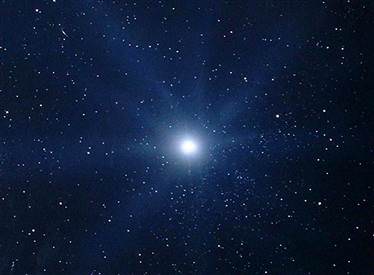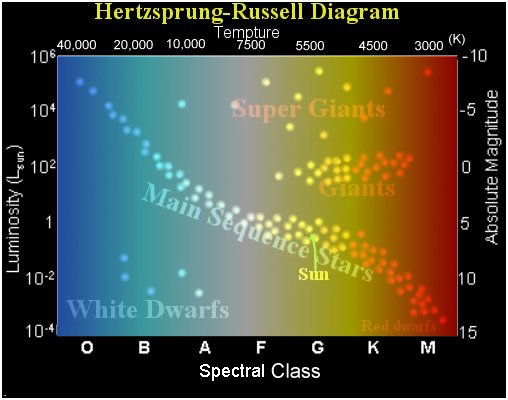SUMMARY
The period I was studying is Silurian, it is 443-417 million years ago, part of Paleozoic Era and Phanerozoic Eon. The silurian was the time on the earth witnessed the climate became more stable than before, ended the erratic change of climate. During silurian, the earth had considerable changes that had important reaction for the life and environment. One cause of this change was the melting of the large glacial formations, this led to the vast rise of the sea level. Coral reefs first appeared in silurian, it is also the time of evolution of fish.
VIDEO
PROJECT REFLECTION
1. What did you enjoy most about the this project?
This project is great that how Ms. Kara let us choose to work alone or with someone else. I chose to work independently, and I enjoyed how I can work alone, don't need to care about others' progress on the project. I can just move on to the next step right after I finish something. This way is more efficient.
2. What was most challenging about this project? Why?
The most challenging part about this project might be finding information, since there are different information everywhere, it is hard to decide which one to believe and which one to choose. Because you always want to learn the truth but not some other stuff that is not correct.
3. What you change about this project and why?
I will force everyone to work alone!!!! Simply everyone need to work independent. I think teacher should tell the students how important that skill is, but stop brainwashing them to collaborate. I know sometimes alone is weak but together will be stronger. But in the society like this, the strong alive, the weak died. You really need to realized no one can help you forever but yourself!!
4. what are 3 things that you learned from this project?
I learned about the sea level increase and melting of glacial ice is not only happening today, but like million years ago already. So, sometimes, all this geologic events are not occurring only because pollution.
GLOG
Thursday, December 8, 2011
Tuesday, November 8, 2011
THE STARS-BLOG ENTRY
1. What is star?
Stars are large hot gases ball, some of them are bright but some are dim. They look small at night when you look at them, it i because they are light years far away from us, but actually most of them are really huge, and even bigger and brighter than the Sun. Stars have many different sizes and colors.
In the center of the stars is where the heat is made, it is made by the nuclear fusion. Stars can classified in different categories, such as types of stars, colors, sizes, ages, luminosity, temperatures and spectral class.

2. Types of Stars
Stars are classified into 4 different types. They are Super Giant, Giant, Main Sequence and White Dwarf. They are also classified in other 6 different categories, ages, size, temperature, luminosity, color and spectral class.
White dwarf stars are white old stars and very small, temperature is in between 4,000-7,000, they are dim stars, spectral class of white dwarf can be B, A, F. Main sequence stars are young medium stars that can be any colors, temperature and luminosity, therefore, they all have different spectral class. Giant stars are large middle age stars, it can be any color, temperature and luminosity, so spectral class can be different too. Super giant stars are super huge middle age stars, that can have any color, temperature luminosity and spectral class.





3. H-R Diagram
H-R Diagram's full name is Hertzprung-Russell Diagram.
A H-R Diagram is a graphical tool to show the characteristics of stars, and classified them based on their colors, star types, ages, sizes, luminosity, temperature and stars' names, based on all these information, you can also define their spectral class.

4. Nuclear Fusion
We know a star is born with a giant cloud, the cloud gets smaller sometimes because the gravity, when it shrink, it gets hotter and hotter, when it is hot enough, a new star is born. And this is nuclear reaction.
Nuclear fusion help stars to make energy. It is the process of the nuclear reaction change two hydrogen molecules into a helium molecule and energy inside the stars.

5. The Life Cycle of a Star
Stars have a life cycle, it tells the process and everything before they were born, during their life, and after they died. Every stars are born with giant clouds with dust and gas, this is called stellar nebula. But there is a different cycle between sun-like stars, huge stars and giant stars.
Sun-like stars born with stellar nebula which is a giant cloud with dust and gas, and then it forms a star, next step will become a red giant star, and the red giant star will collapse in to a cloud of dust and gas, this is planetary nebula, and it will become a white dwarf after it, and finally it die and become a black dwarf. Huge star born with stellar nebula too, after it forms a star, it become a red giant, the star will have a big explosion called supernova, and it become a neutron star. Giant star follow almost the exact steps as the huge stars, but unlike huge star, after the supernova, giant star will become a black hole.

Stars are large hot gases ball, some of them are bright but some are dim. They look small at night when you look at them, it i because they are light years far away from us, but actually most of them are really huge, and even bigger and brighter than the Sun. Stars have many different sizes and colors.
In the center of the stars is where the heat is made, it is made by the nuclear fusion. Stars can classified in different categories, such as types of stars, colors, sizes, ages, luminosity, temperatures and spectral class.

2. Types of Stars
Stars are classified into 4 different types. They are Super Giant, Giant, Main Sequence and White Dwarf. They are also classified in other 6 different categories, ages, size, temperature, luminosity, color and spectral class.
White dwarf stars are white old stars and very small, temperature is in between 4,000-7,000, they are dim stars, spectral class of white dwarf can be B, A, F. Main sequence stars are young medium stars that can be any colors, temperature and luminosity, therefore, they all have different spectral class. Giant stars are large middle age stars, it can be any color, temperature and luminosity, so spectral class can be different too. Super giant stars are super huge middle age stars, that can have any color, temperature luminosity and spectral class.





3. H-R Diagram
H-R Diagram's full name is Hertzprung-Russell Diagram.
A H-R Diagram is a graphical tool to show the characteristics of stars, and classified them based on their colors, star types, ages, sizes, luminosity, temperature and stars' names, based on all these information, you can also define their spectral class.

4. Nuclear Fusion
We know a star is born with a giant cloud, the cloud gets smaller sometimes because the gravity, when it shrink, it gets hotter and hotter, when it is hot enough, a new star is born. And this is nuclear reaction.
Nuclear fusion help stars to make energy. It is the process of the nuclear reaction change two hydrogen molecules into a helium molecule and energy inside the stars.

5. The Life Cycle of a Star
Stars have a life cycle, it tells the process and everything before they were born, during their life, and after they died. Every stars are born with giant clouds with dust and gas, this is called stellar nebula. But there is a different cycle between sun-like stars, huge stars and giant stars.
Sun-like stars born with stellar nebula which is a giant cloud with dust and gas, and then it forms a star, next step will become a red giant star, and the red giant star will collapse in to a cloud of dust and gas, this is planetary nebula, and it will become a white dwarf after it, and finally it die and become a black dwarf. Huge star born with stellar nebula too, after it forms a star, it become a red giant, the star will have a big explosion called supernova, and it become a neutron star. Giant star follow almost the exact steps as the huge stars, but unlike huge star, after the supernova, giant star will become a black hole.

Thursday, October 20, 2011
Extra Credit: Saturn

Planet Order: 6 from the Sun.
Distane from the Sun: 1,426.7million of km
Mass: 95.185 kg
Diameter: 120,536
Rotation: 10hours 14 minutes.
Revolution: 29.5years
#of Moons: 31
Saturn is Jovian
Planet Description
- Second largest planet.
- thick atmosphere is mostly hydrogen and helium.
- has a complex ring system.
- has at least 31 moons.
Interesting Facts
- In Greek mythology, Saturn is the god of agriculture.
- Saturn is the least dense planet.
Wednesday, October 19, 2011
Neptune

Planet Order 8 from the Sun.
Distance from the Sun: 4,496 million of km
Mass: 17,151 kg
Diameter: 49,500 km
Rotation: 16 hrs
Revolution: 164.8 yrs
#of Moons: 13
Planet Description
- large, gaseous planet with rings that vary in thickness.
- methane atmosphere causes its bluish-green color.
- has dark-color storm in atmosphere, it is similar to the Jupiter Red spot.
- has at least 11 moon.
- the windest planet.
- It is sometimes farther from the Sun than Pluto is.
- It is name after the Greek god Poseidon, but the Roman name.
My Comments: I would choose this planet for this project because I am a fan of Poseidon's son, Percy Jackson! ;)
Friday, October 7, 2011
Hurricane Irene Project
Critical Thinking
1. What time of the year do
1. What time of the year do
I think hurricanes occur
2. How can the timing of the
If the storm surge is coming
3. If an area is fully
If an area is fully saturated,
4. How does groundwater
Groundwater saturation affect
Reflection
1. What is something that you
This project help me know
Reflection
1. What is something that you
This project help me know
2. What was difficult for you
To know all the causes and
3. What would you change
I will check my grammar to
4. How did this project help
To know all the causes and
3. What would you change
I will check my grammar to
4. How did this project help
I was not in NY when the
Subscribe to:
Comments (Atom)